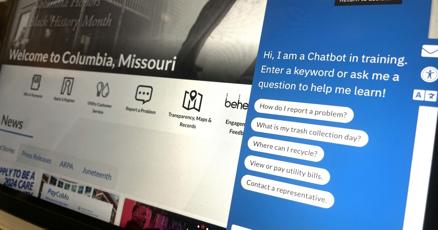In a world where individuals can effortlessly generate content using AI without possessing genuine expertise, the credibility of online content has come into question.
This shift is noticeable in the growing inclination towards seeking authentic human experiences and viewpoints on social media platforms – such as appending [reddit] to search queries or utilizing TikTok and Instagram as search tools – despite reservations regarding influencer-generated content.
People are now more inclined towards establishing connections with other individuals than ever before.
While some businesses may erroneously opt to transition entirely to AI-generated content to cut costs, others can view this as an opportunity to humanize their approach and establish profound connections with their target audience.
The Importance of a Human Touch in the AI Era
Generative AI is significantly impacting SEO and content trends. The ability to produce content at scale is no longer a competitive edge.
Brands need to shift their focus towards a more customer-centric approach by:
- Gaining a deeper understanding of their audience and creating content centered on genuine customer needs and challenges rather than just search volume or product specifications.
- Empowering real experts as content creators, leveraging their firsthand knowledge to develop truly valuable content from a reliable source.
- Utilizing internal experts as brand advocates for their company and involving them in content distribution strategies.
Employing AI to streamline tasks, enhance productivity, and infuse a human element into content strategy can set a brand apart.
1. Emphasize Content Supporting the User Journey Over Search Volume
Before the rise of generative AI, the prevailing strategy for brands in content marketing was to produce content at a large scale.
Brands would cover a wide array of keywords related to their product. With the democratization of content creation, a new approach is necessary.
It is crucial to shift focus away from search volume towards creating content that deeply resonates with the audience and provides unique insights.
Brands should rely on audience research and user insights to craft content tailored to the actual user journey.
During my tenure at Sanity, I realized that merely addressing topics sought by our audience was insufficient. We needed to engage with them throughout their purchasing journey.
The challenge was that the decision-making process for acquiring a headless CMS spanned several months and involved multiple stakeholders.
After extensive research, once we identified the primary decision-maker, we concentrated on producing content tailored to that specific persona to assist them in their immediate tasks.
A practical approach is to apply the Jobs To Be Done framework and map out the typical user journey of your ideal customer.
Form a panel of experts to brainstorm content ideas that can aid your ideal customer in their tasks.
For instance, envision you are part of a survey tool company.
Through user research, you discover that a key use case for your product is conducting employee feedback surveys, and HR teams seek reliable providers to collaborate with. Here is an illustration of how content ideation could unfold:
 Image from Miro, January 2024
Image from Miro, January 2024
You can utilize this Miro template as a guide during your content ideation session.
2. Incorporate Sales and Support Conversations into Audience Research
Understanding your audience enables you to create content that fosters deeper connections with them.
Your company likely possesses a wealth of information on how users interact with its products, which can be leveraged as part of audience research.
Companies frequently engage with customers through sales discussions, support inquiries, online communities, or market research interviews.
These interactions can unveil the problems your product addresses, common support queries, your competitive positioning, and where your target audience discovers your brand.
In categories related to new or vaguely defined products, I have utilized this approach to identify the key phrases actual customers use to describe our product.
By targeting these keywords in our SEO strategy, we were able to reach a broader audience. Speaking to them in their language conveyed a powerful message: “We understand you, we get it.”
You can utilize meeting transcripts and an AI tool of your choice to identify the pain points that matter to your audience, how you stack up against competitors, common pain points encountered while using your product, or extract the key phrases your audience frequently uses when discussing your product.
Various paid tools offer this service at scale, such as the Google Natural Language API or MonkeyLearn, spanning a range of prices from free APIs to high-end enterprise solutions.
Alternatively, you can perform this task independently with basic coding skills using KeyBERT, a free keyword extraction system, or follow a guide on entity and sentiment analysis for SEO by Lazarina Stoy.
Certain user research tools like Chorus or Dovetail already integrate AI capabilities to identify these insights.
Tools like Descript, TL;DV, or Fathom, designed for recording meetings, can also serve this purpose.
3. Facilitate Internal Experts in Content Creation
Collaborating with internal experts enables you to showcase the genuine expertise of your brand and expedite the creation of unique, high-quality content.
Remarkable subject matter experts exist within your organization, but they are often occupied with their primary responsibilities to contribute content to the marketing department.
Instead of missing out on their insights, you can engage a ghostwriter to interview your internal experts.
The ghostwriter should not only write but also facilitate discussions to translate the experts’ knowledge into compelling content.
They should conduct interviews that delve into the expert’s perspectives, ensuring the content authentically reflects their expertise and style, pose insightful questions, and capture the nuances of their explanations.
One interview can serve as the foundation for a series of blog posts, or be repurposed into social media snippets or even a podcast.
Involve your subject matter expert in providing feedback throughout the process. Initiate by developing a comprehensive content brief based on what your audience seeks to learn about the topic.
Subsequently, have the expert review the brief, suggest any missing elements, or rectify inaccuracies.
Before publishing the content, your internal expert should conduct a final review.
Based on my experience, this collaboration demands minimal time from your internal experts; around five to 10 minutes for the initial brief review, 30 to 60 minutes for the interview, and 10 to 20 minutes for the final review.
4. Offer an Authentic Perspective
While maintaining a consistent brand voice is crucial, allowing authors to infuse their personalities and perspectives can enhance the appeal and engagement of your content to an audience seeking human connections.
There is a genuine appetite for distinct viewpoints and voices.
Google recently introduced a new SERP feature, “Discussions and Forums,” to highlight authentic user experiences in review searches.
In 2023, Google rolled out Perspectives, a novel SERP format that showcases personal experiences through a blend of videos, social media posts, and news.
Over the past year, Google has been experimenting with incorporating author names into articles and top stories in various ways.
Here are strategies to cultivate an authentic perspective:
- Establish a distinct and unique brand voice that mirrors your company’s values and character. This voice should be consistent across all content yet flexible enough to allow individual authors’ personalities to shine through.
- Develop content guidelines that encourage authors to inject their voices and personalities into their writing. This could involve sharing personal anecdotes, expressing opinions, or adopting a style that mirrors their unique communication approach. These guidelines should strike a balance between upholding the overall brand voice and permitting individual perspectives.
- Actively seek out and integrate personal narratives and experiences from your team and clients in your content. This could take the form of case studies, interviews, guest posts, or featured quotes that infuse a human touch into your content.
- Provide training or resources to your team on effective storytelling. Educate them on incorporating personal experiences and anecdotes into content in a manner that enhances the message without detracting from the professionalism and objectives of the piece.
Standing out from the crowd can be achieved by offering a strong, distinctive, and authentic perspective.
Do not shy away from being directive in your content or integrating personal anecdotes from your team or clients.
5. Enhance Top-Performing Articles with Personal Videos
People are drawn to stories. This is one of the reasons behind TikTok’s immense popularity: storytelling is more captivating than reading an article.
You do not need to devise an entirely new content strategy; you can repurpose your best-performing articles into video content.
To implement this, identify your top-performing articles and craft a script summarizing the key points.
You can request the article’s author to record the video using their laptop, handle it yourself, or involve your company’s brand ambassador if available.
Incorporate the video into your page and assess user feedback on this new experience. If well-received, consider expanding this approach to other pages.
This can enrich your existing articles and potentially boost your ranking with videos by leveraging structured data for video on your page or sharing the video on third-party platforms like YouTube or TikTok.
A common challenge in this process is script creation.
AI can be a valuable ally here! Paste your article into ChatGPT or similar tools and request a video summary script. Edit it to align with your brand voice, and then find a team member comfortable in front of the camera!
Video editing can present another obstacle. Once again, AI can be of assistance.
Several AI video editing tools are available that automatically eliminate pauses and filler words, create engaging thumbnails, and aid in incorporating intro and outro segments.
6. Establish Your Employees as Influencers
Before delving into this recommendation, it is essential to clarify that unless stipulated in their contract or compensated for, employees are not obligated to share your brand’s content.
Another advantage of collaborating with internal experts to craft content is their inclination to share it on their personal platforms.
This enhances their image, aids in building their personal brand, and likely instills pride in their latest article.
However, your subject matter experts may not be adept at social media. Here are some tips to make this strategy effective.
- Assist your internal experts in disseminating their content by drafting a social media post (e.g., Twitter thread) or LinkedIn post that they can edit and publish on their profiles.
- Leverage generative AI to transform lengthy articles into compelling summaries that pique curiosity and prompt your audience to click through.
- Recognize and reward participating employees by reposting their content and publicly acknowledging their contributions. Evaluate the impact of their engagement and express gratitude for their efforts on company channels like Slack or during team meetings.
- Offer an optional social media workshop for participating employees to enhance and expand their personal brand.
- Establish clear guidelines on content sharing, focusing on inclusive language and safeguarding client data.
- Utilize social media analytics to track the reach and impact of shared content. This data can offer insights into the content resonating most with your audience, enabling you to refine your strategy.
In Conclusion
The proliferation of AI is fostering a sense of skepticism among users towards content lacking a human touch.
Why do individuals gravitate towards platforms such as Reddit, Instagram, and TikTok? It is due to their innate desire for authentic human connections and content that genuinely strikes a chord.
For brands, the challenge lies not only in keeping pace with AI advancements but in embracing the human elements that foster genuine connections and trust.
Brands must prioritize authenticity, orient strategies around the user, and leverage the diverse, authentic perspectives and experiences of real individuals.
This approach enables the creation of content that not only captures attention but deeply resonates and leaves a lasting impact.
In the era of AI, a human touch is not merely desirable; it is indispensable.
Featured Image: Prostock-studio/Shutterstock










